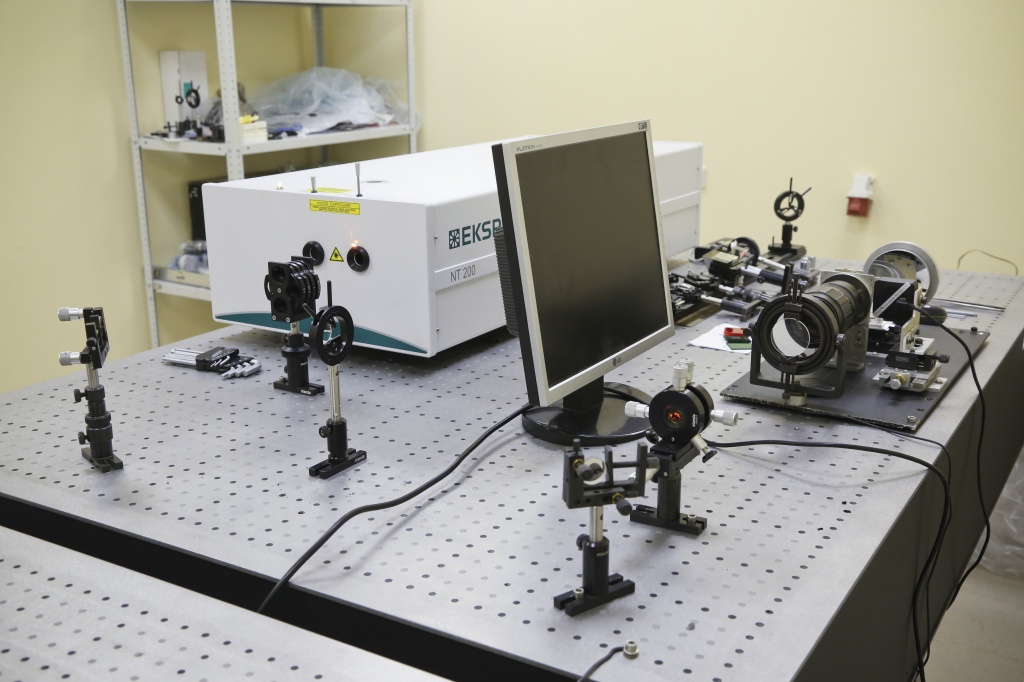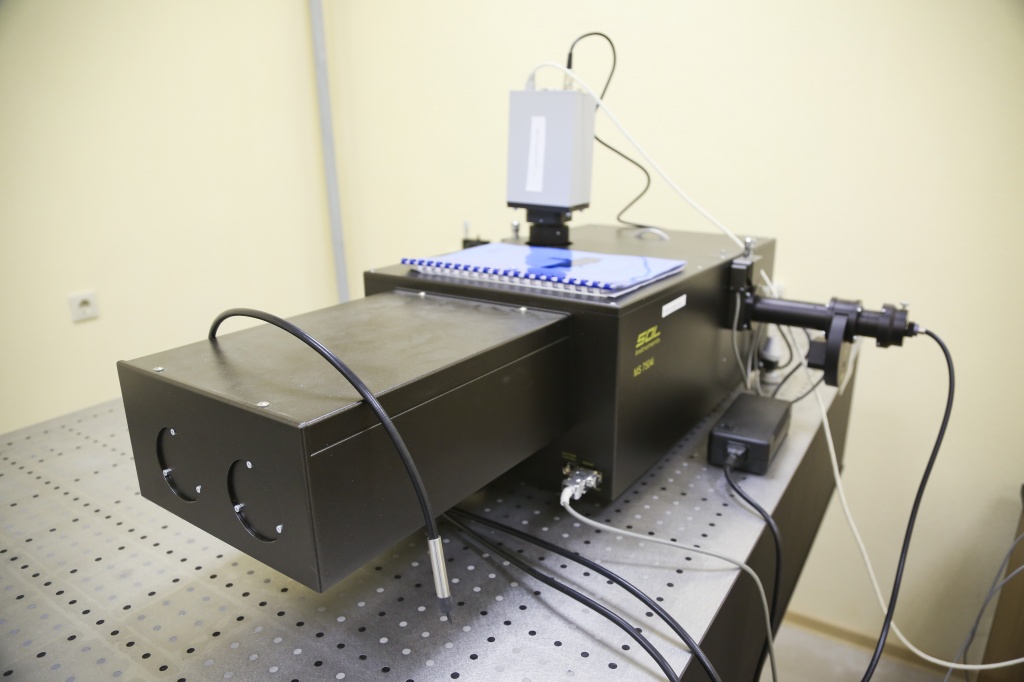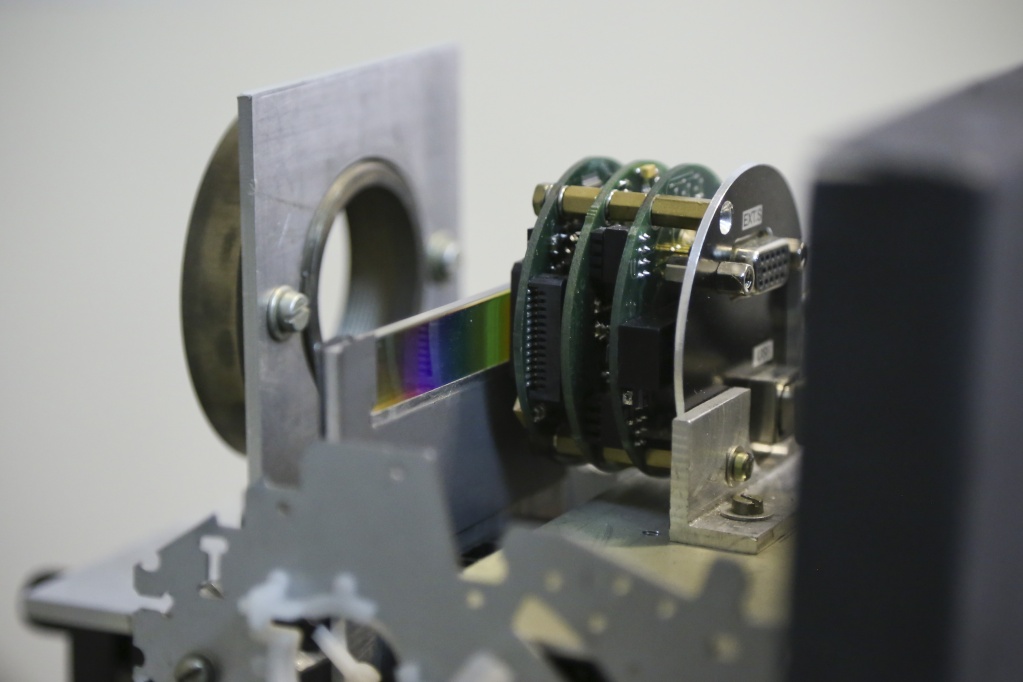The team of Optical information technology department, headed by L. L. Doskolovich, a professor, Doctor of Physics and Mathematics (higher doctorate), has many years of experience in the field of diffractive optics and nanophotonics. Scientific results of the team’s work are presented in eight monographs published in Russia and abroad, as well as over 200 research papers published in leading Russian and foreign scientific journals.
The department’s team has great scientific potential in the field of solving direct and inverse problems of light diffraction on periodic micro and nanostructures, photonic crystals, diffractive and refractive optical elements. At present the team includes 5 Doctors of Science, 6 PhDs, 5 postgraduates. More than a half of the team members are under 35 years old.
The department’s activity aims at development and prototyping of compact high-performance hyperspectral equipment for Earth remote sensing (ERS) with small space vehicles. The NIL-97 project is expected to perform the full range of work on development and creation of spectral filters along with prototypes of compact hyperspectral ERS equipment, and experimental studies.
The department has the necessary technological equipment for experimental studies, including a tunable laser system NT242, spectrograph MS7501, and a spectral camera (Fig. 1–3).

Fig. 1. Model of an Offner imaging spectrometer. A laser system NT242 is used as a radiation source, which allows generating wavelengths with a predetermined wavelength range from 400 to 2,500 nm in increments of 1 nm.

Fig. 2. Spectrograph MS7501 with an accuracy of 0.05 nm.

Fig. 3. Recording CDD-sensor with a multilayer spectral filter.
Brief description of tasks and the work plan
A wide range of tasks related to real-time monitoring of the Earth’s surface can be efficiently solved using small space vehicles (SV) equipped with a compact hyperspectral unit (HSU). Currently, the most modern Russian HSU is a system of space vehicle Resurs-P with a weight of 150 kg. For a spectral range of 400–1100 nm, this HSU provides hyperspectral images with spatial resolution of 30 m and spectral resolution of 10 nm. World champion in the weight and size is an HSU of Korean microsatellite STSAT3 [1, 2]. This system provides the same performance (spatial and spectral resolution) as the Russian system does, with a weight of only 5 kg, which is 30 times smaller than the weight of Resurs-P. The Korean HSU also demonstrates an order of magnitude lower power consumption (approximately 5 W). It should be noted that the Korean system is an improved version of the HSU developed by the European Space Agency for satellites PROBA [3]. The Korean HSU includes a catadioptric lens and an Offner spectrometer. And as a dispersing element, a combination of prisms with complex curved surfaces is used.The project participants believe it is possible to create an HSU weighing less than 5 kg with a significant improvement in performance compared to those of the Korean HSU. According to the project participants, the most promising option of an HSU is an optical system combining a high-resolution lens and a spectral filter mounted directly on the recording CCD-sensor. High performance and compact size can be achieved through the use of nanophotonic structures that allow high efficiency and accuracy to implement the basic spectral filtering of optical radiation.
The project involves the full range of work including development and creation of spectral filters, prototyping compact HSUs for ERS and experimental studies.
The project will explore the different types of spectral filters based on nanophotonic structures. As a result, technologically realisable structures with the best performance will be selected. On the basis of theoretical and numerical studies of the project, experimental research will be conducted to create and demonstrate spectral filters intended for use in the proposed HSU. With the created spectral filters, a prototype of a compact HSU will be constructed to provide an appropriate combination of a high-resolution lens and a planar spectral filter mounted on the recording CCD-sensor. The weight of optical components of the proposed system will be only 2–3 kg. Within the project, it is also expected to create a prototype of a compact HSU (up to 5 kg) containing an Offner spectrometer with a diffraction grating as a dispersing element. In this case, it expected to significantly expand the recorded spectral range up to 2–2.5 mm.
The general plan of work includes the following steps:
Step of 2014:
- Recreating a model of the optical system of the Korean HSU and study of its performance based on mathematical modelling.
- Development of software to solve direct and inverse problems of calculating multilayer interference coatings; calculation and research of spectral filters based on a system of layers with linearly varying thickness.
- Development of software for solving of direct and inverse problems of calculating metal-dielectric nanostructures with continuous layers; calculation and research of spectral filters based on nanophotonic structures of this type.
Step of 2015:
- Development of software for solving direct and inverse problems of calculating diffraction structures for spectral filtering electromagnetic radiation in the near field; calculation and research of nanophotonic structures of this type.
- Production and experimental study of the spectral filters based on multilayer metal-dielectric nanophotonic structures.
Step of 2016:
- Development of software for modelling and optimization of the HSU optical system containing elements of nanophotonics; configuring the hyperspectral unit for experimental implementation.
- Prototyping an HSU based on the produced nanophotonic elements and its experimental study.
- Prototyping an HSU containing an Offner spectrometer and diffraction grating and its experimental study.
The main results of 2014.


